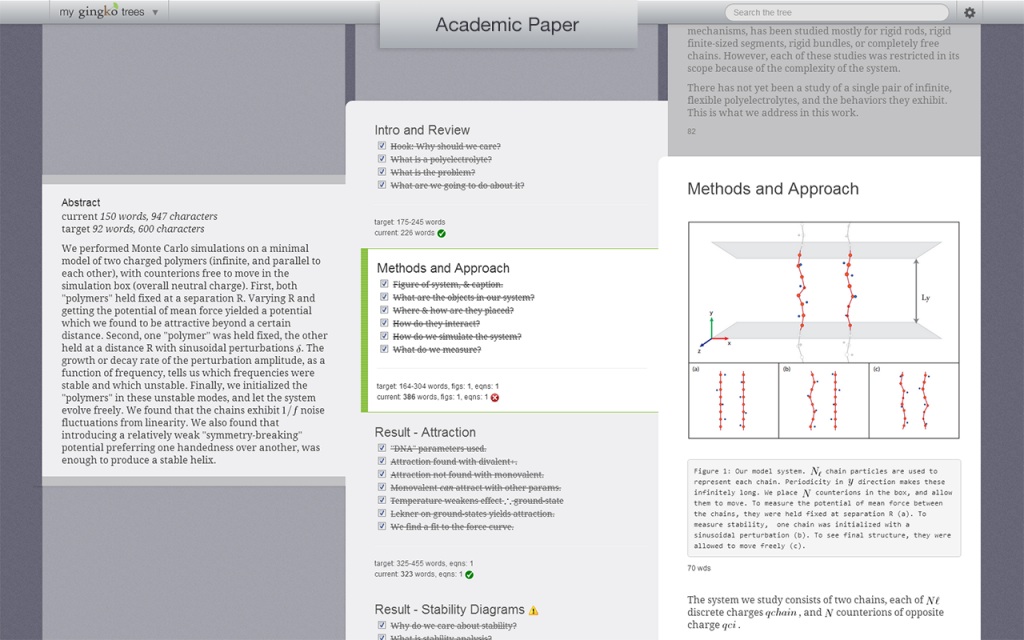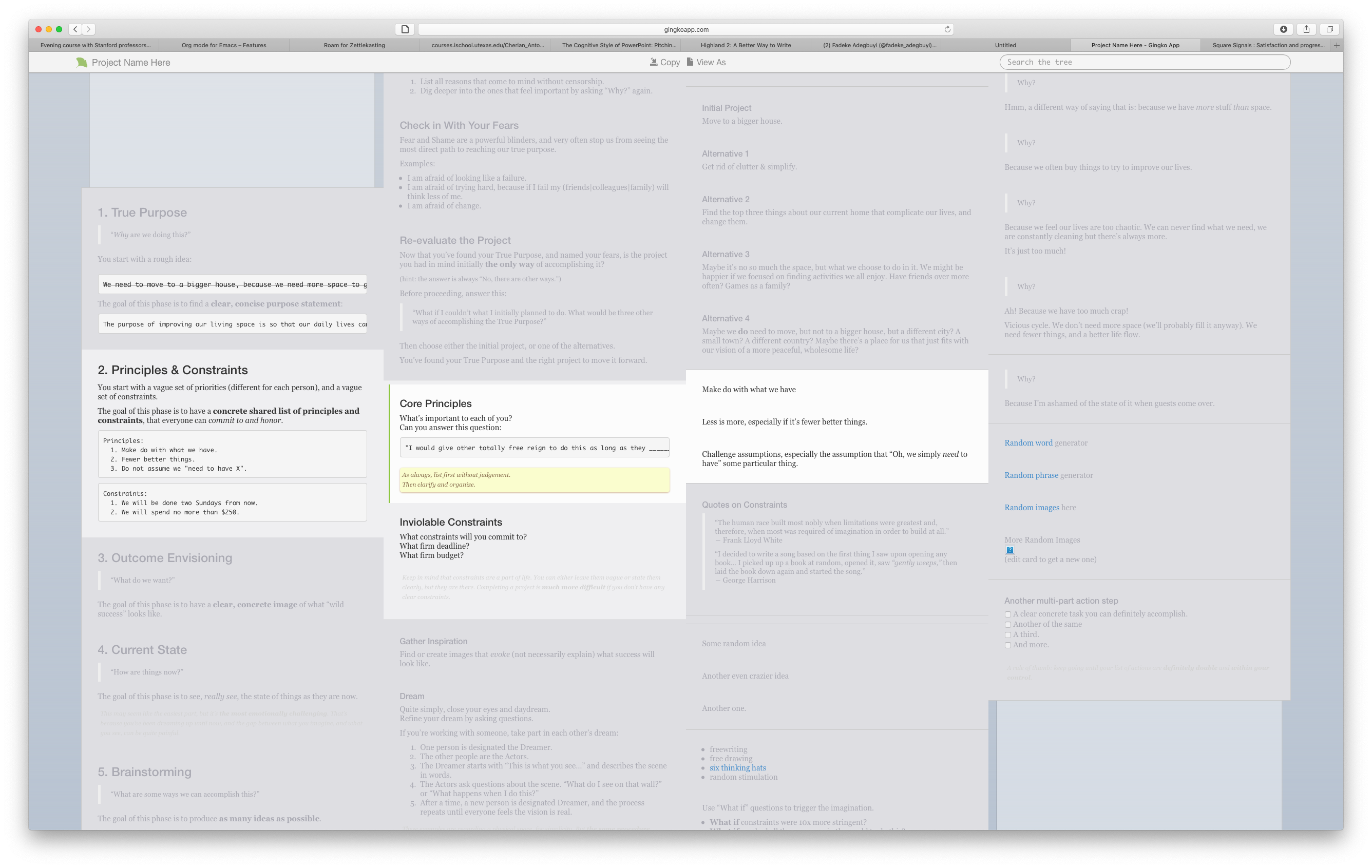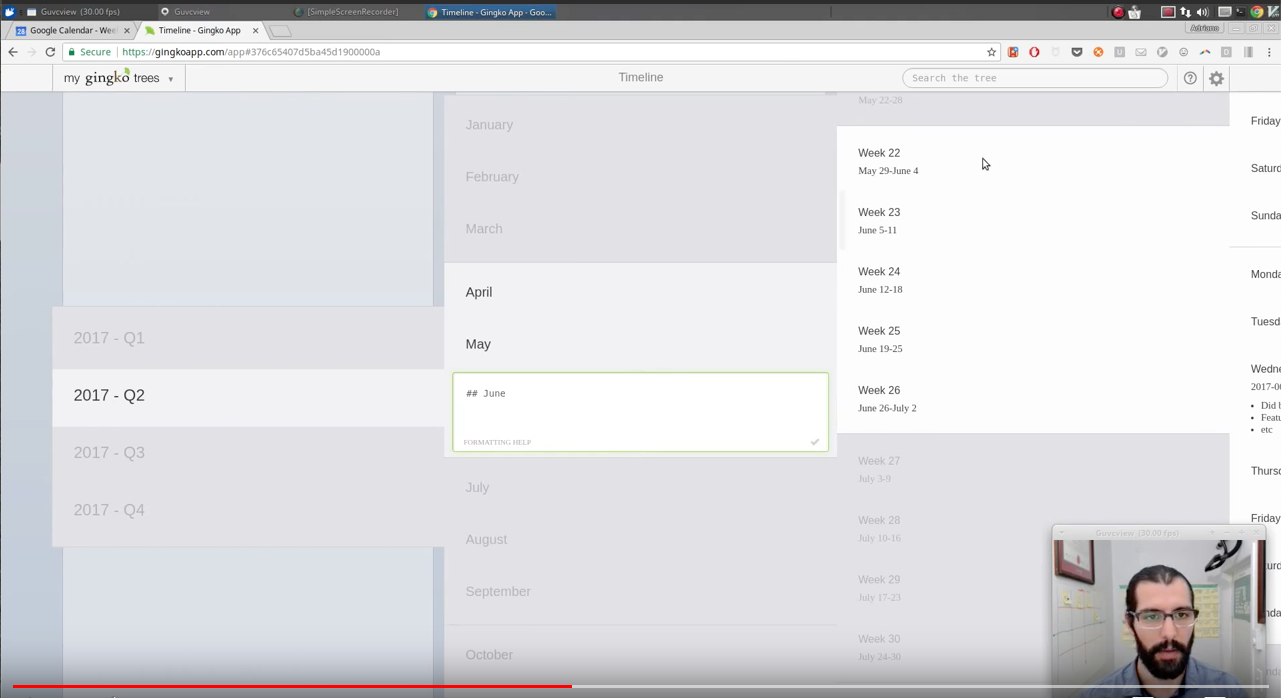Andyʼs working notes
About these notesGingko
Gingko is a web-based writing tool with an unusual hierarchical interface architecture.

Authors write by creating “cards,” initially in the leftmost column. That column is meant to hold “top-level” summary writing. Each card can have expanded cards expanding on that topic in the middle column, and so on, into the third column (or deeper). In this fashion, writers can work at high and low levels of detail at the same time, maintaining Peripheral vision. One of the deep columns will end up being the final manuscript.
The model relates to the practices suggested in Create speculative outlines while you write, but with a stronger connection between the outline note and its constituents. This structure emphasizes ease through atomicity (see Evergreen notes should be atomic, Evergreen notes permit smooth incremental progress in writing (“incremental writing”)).
The deeply hierarchical model seems to assume that you can write “from the outside in.” That is, that you’ll first write the high-level details, then you’ll fill them in. I often find that I can’t see the high-level structure at all until I’ve written all the atomic details: Evergreen notes are a safe place to develop wild ideas. Also contra Prefer associative ontologies to hierarchical taxonomies.
But I do like the way that it removes friction from “drilling down” into detail. I sometimes find that I don’t know how to break up a set of entangled ideas, so I end up writing a single note with many subheadings. It inevitably ends up needing to be refactored, which is a real friction.

This kind of hierarchical editor is interesting in all kinds of contexts. For instance, the author suggests using it to create a multi-level journal so that you can get line-of-sight from years, months, weeks, to days. It’s also interesting to imagine using this as a tool to help with the problems described in It’s hard to maintain aligned plans spanning many time horizons. Here’s an example of Gingko used as a project planner.

Painless Dissertation Writing - Gingko App
Writing research papers is hard not because you don’t know enough, but because you know too much. … When you’re in it, all you can see are all the devilish details.
What if there was a way to write, that forced you to always keep the big picture in view? So while you write out the details of this particular argument/experiment/result, you can still see how it fits into your whole topic.
What if there was a way that your notes became your thesis outline?
Then your outline became your thesis and your publications, at the same time?